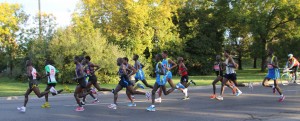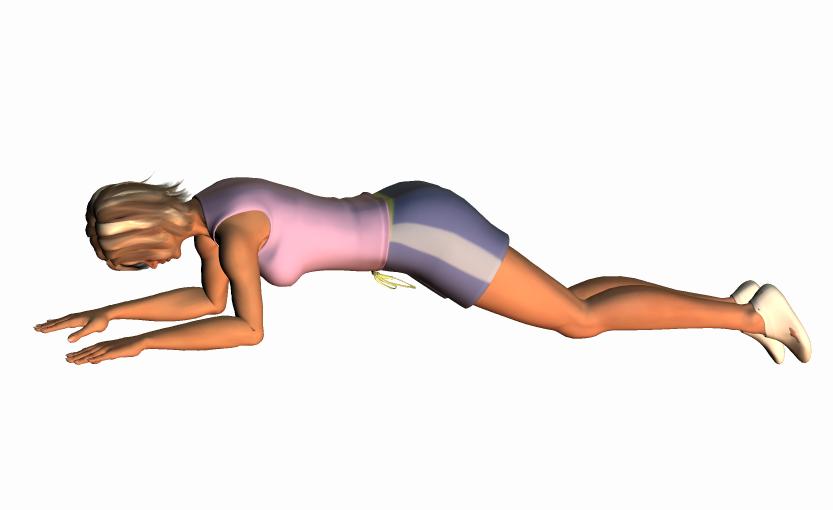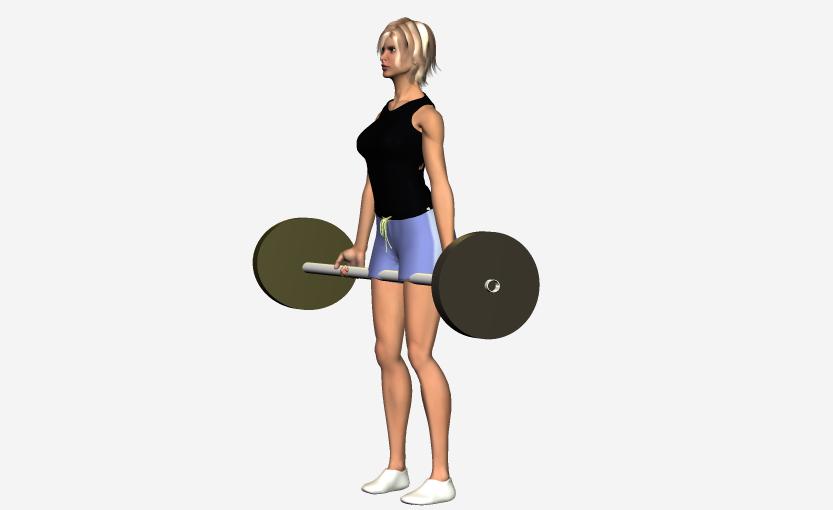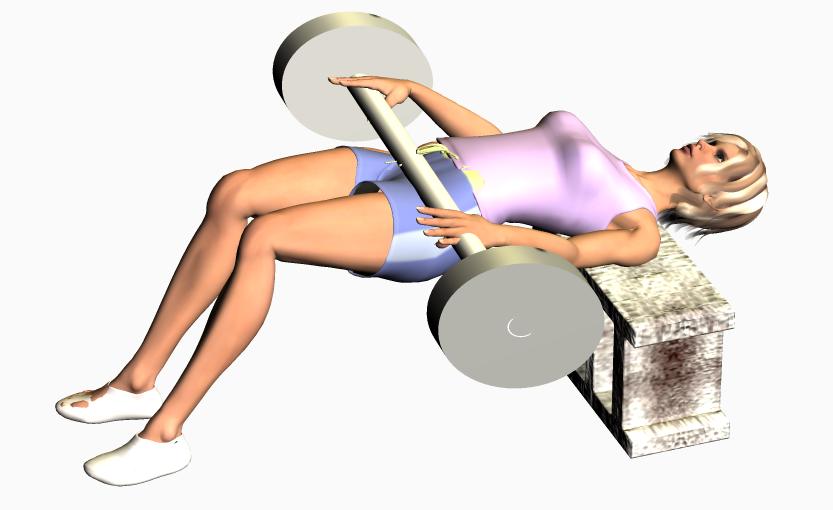Don’t get me wrong. I love respect the core. But you can’t open a running book, magazine or blog without hearing how important it is for runner’s to train the core. I agree with this to some extent but for 10 years I have advocated for three points to keep in mind when it comes to runners and core training:
1. Core training should come second to a general strength and power training program.
2. You can adequately train your core without doing a bunch of traditional core only exercises. This is a whole blog post that you can see here.
3. If you are going to focus on the core consider training for strength and do less endurance core exercises (if you do 5 minutes or more of continuous planking then I’m talking to you).
Point 1. General strength and power first
Despite the core’s dominance in the sports medicine field and popular culture there is very little research that basic core work actually improves running performance, improves posture or makes you more efficient.
A couple of studies show an improvement in running performance (here) with one showing no change. A slightly related review on core training found only marginal benefits of core stability training to athletic performance. Lest anyone think I am going out on some Maverick limb here and that I’m a contrarian-prick my thoughts have been mirrored in other published reports questioning the benefits for simple core exercises for athletic performance.
I recognize that a lack of evidence does not mean we should stop training our core for runner’s but when we have a huge amount of evidence for another intervention and a limited number of training hours then we should allocate our training time accordingly.
Guess what research dwarfs the core research?
Lower body strength and power programs. There is a huge body of research showing that heavy strength training or power training (e.g. plyometrics) improve running economy and race performance.
Here area some blog posts and a few research papers:
1. From Tom Goom the running physio: resistance training for runners.
2. From the sports physio Adam Meakins: should endurance athletes do weights?
2. Maximal strength and explosive strength both improve performance
3. Training heavy improves performance
4. Strength training superior to endurance strength training for performance
5. Strength training again superior to endurance strength training for performance
6. Ten year old research (nothing is new) showing improvements in running economy after heavy resistance training
7. A systematic review suggesting improvement in running economy
The theme in the above studies (and they are just a small sample) is that maximal strength training is either superior to endurance-strength training (i.e doing more reps of a lighter weight) or just as good at improving running economy. Meaning endurance athletes should stregth train and lift heavy. Explosive training (often plyometrics) are also beneficial in improving running economy. There is no research saying we should not be strength training. So get off your planks and grab a bar.
Why is the core not of extreme importance?
The hips and the calves produce power and should be treated as supreme
The trunk muscles (erector spinae, obliques, rectus abdominis, transverse abdominis) aren’t the primary drivers of locomotion in endurance athletes. They are important they just need to be put in their place. This is not an all or none thing but they take a back seat to the legs and hips during running and our training should reflect this (see Tim Dorn’s research here and here, an old post of mine here and Sam Hamner’s research here and here).
2. You can train the core without actually targeting the core
I want to reiterate - the core is still important. No part of the body should be neglected. But perhaps there is a more efficient way to train the core. This was my big research thesis 7 years ago that was quashed with all my other mediocre research dreams when I was pushed out the door of chiropractic college I worked at ![]() . In our pilot work we were seeing trunk muscle EMG activity during squats, deadlifts, cleans, jumping, pull ups, pushups etc that was comparable to the activity seen during traditional core exercises. It wasn’t as high as we thought but it was still comparable to standard core exercises (The reason it was not as high as we predicted was later explained in an excellent paper by Stu McGill here)
. In our pilot work we were seeing trunk muscle EMG activity during squats, deadlifts, cleans, jumping, pull ups, pushups etc that was comparable to the activity seen during traditional core exercises. It wasn’t as high as we thought but it was still comparable to standard core exercises (The reason it was not as high as we predicted was later explained in an excellent paper by Stu McGill here)
You can read an entire post on this topic here. But the take home point is that exercises like the deadlift, squats, push ups, kettlebell swings, kettlebell snatches, Olympic lifts, probably pull ups, probably jumps and sprinting train the core to comparable levels as basic core exercises do. Yes, you can certainly focus on weaker areas with basic exercises and you might want to do this if you are working with someone doing corrective exercise work but for the average runner you get a lot of bang for your buck when doing compound strength exercises.
#3. Train the core to get strong - stop doing “tempo” only core workouts.
When you are running your core muscles work less than 30% of their maximum. So in effect, running is a core exercise to train the endurance ability of your trunk. If you run 6 days a week for an hour that is 6 hours of core training. Simple adding 10-15 minutes 3-4 times a week of basic core exercises does not really add much to the endurance ability of your abs/trunk. You need to do something different and stress your trunk to a greater degree.
If you are doing more than 3 minutes of continuous planking what energy system are you training? If you are training 10-15 minutes of gut-busting plank work 4-5 times a week what do you think you are doing? Would you ever just do 200 squats in a row and assume this helps your running? No. Yet this is what these drawn out core endurance exercises are akin to. Would we ever train other body parts like this? Would you do 5 intense tempo sessions a week and nothing else? Why train your core like this?
Gut Busting core plank sessions are really “tempo” runs for your core

I think there is still some benefit in those brutal core workouts that you do where you work hard for 20-30 minutes. To determine its value you need to compare it to the quality workouts that make up the running you do in a week. What is that gut-busting workout akin to? You work intensely for 20-30 minutes - does it sound like a tempo run? Would you do 4-6 tempo runs a week? No way. Thus, we should train the core the same way.
Your running provides endurance training stimulus for your core, your gut busting plank/trunk work is your tempo/quality work (1-2 times a week). If we stay consistent with our exercise training principles we should only do gut-busting core work at that anaerobic threshold level one to two times per week. This leaves us with one more workout.
To have a fully comprehensive and balanced workout regime you now you need to add some power and strength to your core work. We do the same thing with your lower body so lets do it with your core.
An alternative to your “tempo” core workouts
If you have trained your core for a long time its time to mix it up and get strong. This might be the component that you are missing because you are doing too many “tempo” core workouts. Training for strength or power may be the attribute your core needs to become well rounded and make you a better runner. The mechanism for a core helping a runner can’t just be about endurance. Because if it were than just running would be sufficient. The mechanisms for improving running by training the core may be explained by other neuromuscular characteristics that develop from strength training. If so, we need exploit these.
Some suggested exercises to increase the strength challenge of your core.
1. Staggered Pushups
2. Ab wheel rollouts
3. Bridge Walkouts
4. Dead lifts
5. Side Bridges with leg lifts
6. High Knee Drives
7. Jumping tuck jumps
8. Medicine ball slams and throws
Warning
This is advanced. You need to progress to this work. That’s where basic core exercises are good. You progress as those basics become to easy. Don’t just do more of them. If you squat 135 lbs for 8 repetitions when you start strength training nobody expects you to still do 135lbs 2 years later but now for 30 reps. That is akin to the 5 minute plank.
A great article which shows how to do a number of excellent core exercises was recently written by Ben Bruno. You can see the article here at T-Nation. His writing of this sure saved me a lot of work.
Take home points
1. You should strength train and put more emphasis on general strength training than just your core
2. Many basic strength training exercises also train the core
3. Decrease the number of gut busting/tempo core workouts to 1-2 per week just like you do with quality runs
4. Basic running provides the stimulus for endurance adaptations in your core just like all your other systems
5. To train at true comprehensive capacity and be well rounded your core workout should also address strength and power not just endurance and speed-endurance.
Further Reading
1. Here is a nice complimentary blog post by Physio Tom Goom on training your core for running





